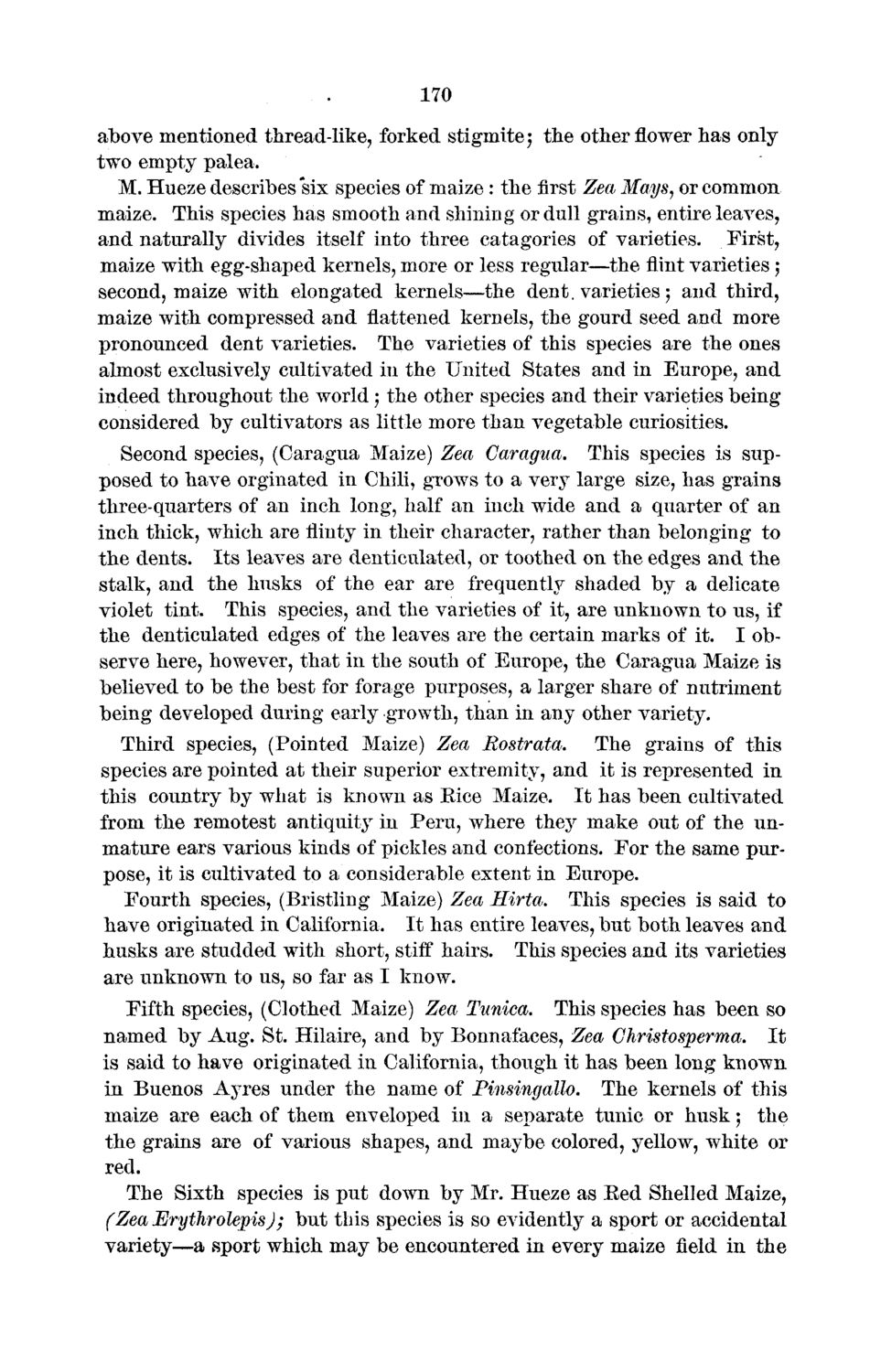| |
| |
Caption: Board of Trustees Minutes - 1872
This is a reduced-resolution page image for fast online browsing.

EXTRACTED TEXT FROM PAGE:
170 above mentioned thread-like, forked stigmite; the other flower has only two empty palea. M. Hueze describes six species of maize: the first Zea Mays, or common maize. This species has smooth and shining or dull grains, entire leaves, and naturally divides itself into three catagories of varieties. First, maize with egg-shaped kernels, more or less regular—the flint varieties) second, maize with elongated kernels—the dent, varieties 5 and third, maize with compressed and flattened kernels, the gourd seed and more pronounced dent varieties. The varieties of this species are the ones almost exclusively cultivated in the United States and in Europe, and indeed throughout the world 5 the other species and their varieties being considered by cultivators as little more than vegetable curiosities. Second species, (Oaragua Maize) Zea Caragua. This species is supposed to have orginated in Chili, grows to a very large size, has grains three-quarters of an inch long, half an inch wide and a quarter of an inch thick, which are flinty in their character, rather than belonging to the dents. Its leaves are denticulated, or toothed on the edges and the stalk, and the husks of the ear are frequently shaded by a delicate violet tint. This species, and the varieties of it, are unknown to ns, if the denticulated edges of the leaves are the certain marks of it. I observe here, however, that in the south of Europe, the Caragua Maize is believed to be the best for forage purposes, a larger share of nutriment being developed during early growth, than in any other variety. Third species, (Pointed Maize) Zea Eostrata. The grains of this species are pointed at their superior extremity, and it is represented in this country by what is known as Eice Maize. It has been cultivated from the remotest antiquity in Peru, where they make out of the immature ears various kinds of pickles and confections. For the same purpose, it is cultivated to a considerable extent in Europe. Fourth species, (Bristling Maize) Zea Hirta. This species is said to have originated in California. I t has entire leaves, but both leaves and husks are studded with short, stiff hairs. This species and its varieties are unknown to us, so far as I know. Fifth species, (Clothed Maize) Zea Tunica. This species has been so named by Aug. St. Hilaire, and by Bonnafaces, Zea Christosperma. I t is said to have originated in California, though it has been long known in Buenos Ayres under the name of Pinsingallo. The kernels of this maize are each of them enveloped in a separate tunic or husk; the the grains are of various shapes, and maybe colored, yellow, white or red. The Sixth species is put down by Mr. Hueze as Eed Shelled Maize, (Zea ~Erythrole])isJ; but tbis species is so evidently a sport or accidental variety—a sport which may be encountered in every maize field in the
| |